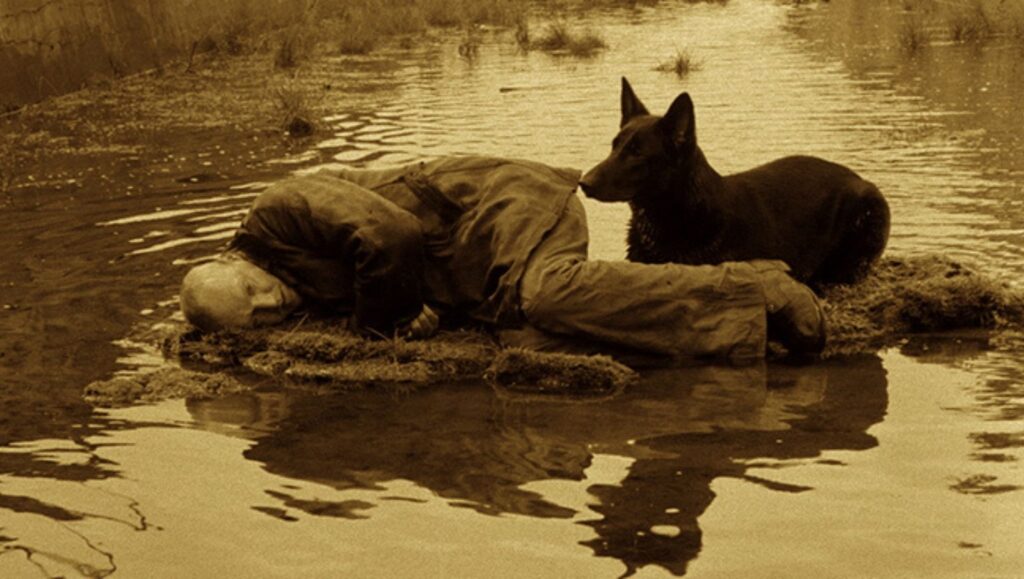Blog
The Haunting Legacy of Stalker 1979 Movie: A Masterpiece and Tragedy
Stalker (1979), directed by the legendary Soviet filmmaker Andrei Tarkovsky, is widely regarded as one of the most profound and visually stunning films in the history of cinema. Holding a rare 100% rating on Rotten Tomatoes, the film has captivated audiences and critics alike with its haunting narrative and philosophical depth.
However, the story behind its production is shrouded in eerie tragedy, with claims that the film’s toxic filming conditions contributed to the premature deaths of Tarkovsky, his wife Larisa, and lead actor Anatoly Solonitsyn.
The Cinematic Brilliance of Stalker
Tarkovsky, often hailed as one of the greatest auteurs in world cinema, was known for his poetic and meditative approach to filmmaking. His career was marked by only seven feature films, yet each left an indelible mark on cinema, including classics such as Ivan’s Childhood (1962), Andrei Rublev (1966), and Solaris (1972). Stalker stands out as perhaps his most enigmatic and philosophically rich work.
The film is loosely adapted from Roadside Picnic, a science fiction novel by Arkady and Boris Strugatsky. It tells the story of a mysterious and heavily guarded area called “The Zone,” where a room exists that can grant the deepest desires of those who enter it.
The protagonist, the “Stalker” (played by Alexander Kaidanovsky), guides two men—a writer and a professor—through this surreal, desolate landscape, prompting reflections on human desire, faith, and the search for meaning.
Critics have praised the film’s immersive atmosphere and Tarkovsky’s mastery of slow, deliberate pacing. Reviewers often highlight the opening scenes as some of the most visionary and gripping moments ever captured on film, with many noting how the film challenges viewers to interpret its metaphysical themes on their own terms.
The Toxic Environment Behind the Camera
What many fans and scholars find chilling is the hazardous environment where Stalker was filmed. After initial attempts to shoot the movie in Tajikistan were disrupted by an earthquake, and a polluted industrial area in Ukraine was deemed unsuitable, Tarkovsky’s production team settled in Estonia, near Tallinn, specifically around the Jägala River.
According to Vladimir Sharun, the film’s sound recordist, the area was severely polluted by a nearby chemical plant. He described scenes where “snow was falling in the summer” and a thick white foam floated downstream—both symptoms of dangerous chemical contamination. Many of the crew developed allergic reactions and health issues during filming, suggesting prolonged exposure to toxic substances.
This grim environment likely took a toll on those involved in the production. Tarkovsky was diagnosed with lung cancer and died in 1986 at the age of 54. Anatoly Solonitsyn, who portrayed the “Writer,” also died of cancer shortly thereafter. Larisa Tarkovskaya, Andrei’s wife and a vital collaborator, succumbed to the same disease in Paris years later.
Though no definitive scientific study has confirmed that the pollution was the direct cause of their illnesses, these coincidental deaths have fueled speculation that the dangerous filming conditions contributed to their untimely deaths. The theory remains controversial but casts a somber shadow over the film’s legacy.

The Making of Stalker: Artistic Ambition Meets Environmental Hazard
The quest for authenticity and the eerie atmosphere led Tarkovsky to choose these challenging locations despite their risks. The bleak, desolate landscapes and industrial decay were perfect visual metaphors for Stalker’s themes of alienation and existential searching. The locations themselves became a character in the film—an uncanny, post-apocalyptic world filled with danger, uncertainty, and beauty.
The production was a grueling process. Weather conditions were harsh and unpredictable. The cast and crew endured long hours in polluted surroundings, which likely exacerbated the health risks. Tarkovsky’s perfectionism pushed the team to their limits, demanding numerous takes to capture the film’s slow, meditative tone and precise imagery.
Yet the film’s atmospheric power cannot be overstated. Tarkovsky’s use of natural light, long takes, and sparse dialogue invites viewers into a trance-like experience, making Stalker not just a story, but a profound philosophical meditation on human existence.
Critical Reception and Enduring Legacy
Despite its initial mixed reception, Stalker has grown in stature over the decades. The British Film Institute ranked it among the greatest films ever made, and its 100% Rotten Tomatoes score reflects sustained critical admiration. The film’s themes continue to resonate, influencing filmmakers, writers, and artists worldwide.
Beyond cinema, Stalker has inspired other media. Notably, the S.T.A.L.K.E.R. video game series, which blends horror, survival, and science fiction, draws heavily from the film’s atmosphere and narrative themes. This cross-media influence underscores the film’s powerful cultural impact.
Reflecting on the Cost of Artistic Pursuit
The story of Stalker poses difficult questions about the sacrifices behind art. How far should filmmakers go in pursuit of authenticity? What responsibility do directors have to protect their cast and crew from harm? Tarkovsky’s film is a masterpiece, but the cost paid by those who brought it to life cannot be ignored.
The deaths of Tarkovsky, Solonitsyn, and Larisa Tarkovskaya add a tragic layer to the film’s mystique, reminding us that art can sometimes come at a great personal price. Their legacy invites a broader conversation about occupational safety in the film industry and the unseen toll that environmental hazards can take.
Conclusion: A Film to Admire and Remember

Stalker remains a cinematic milestone, celebrated for its haunting beauty and profound thematic depth. Its perfect score on Rotten Tomatoes is a testament to its enduring power to captivate and challenge audiences. Yet, the story behind its making—marked by environmental danger and tragic loss—adds a sobering dimension to its legacy.
For those who watch Stalker, it is not just a film but an experience shaped by artistry and sacrifice. Its legacy is a powerful reminder of the human cost sometimes hidden behind the pursuit of cinematic greatness.
Stalker follows a guide leading two men through a mysterious Zone to find a room that grants their deepest desires.
Andrei Tarkovsky, a renowned Soviet filmmaker.
It holds a 100% Rotten Tomatoes score and is praised for its visionary storytelling.
The director, lead actor, and Tarkovsky’s wife all died of cancer, possibly linked to toxic filming locations.
Near Tallinn, Estonia, in a heavily polluted industrial area.
No, it remains an unconfirmed theory.
Roadside Picnic by Arkady and Boris Strugatsky.
Human desire, faith, and existential meaning.
Yes, including the popular S.T.A.L.K.E.R. video game series.
-

 Blog3 years ago
Blog3 years ago10 Celebrities and Their Equally Gorgeous Siblings
-

 Blog3 years ago
Blog3 years agoThe highest-paid actors of all time are living large
-

 Blog3 years ago
Blog3 years agoHollywood Stars’ Instagram Photos viciously replayed
-

 Blog3 years ago
Blog3 years agoUpsetting And Creepy Facts We Wish We Could Erase From Our Memory
-

 Blog3 years ago
Blog3 years agoBecome Star Quality With These Celebrity Morning Routines
-

 Blog3 years ago
Blog3 years agoSome of Hollywood’s best-known movies have secrets that will shock you
-

 Blog3 years ago
Blog3 years agoThese Celebrity Couples Did Some Bizaree Things In The Name Of Love
-

 Blog3 years ago
Blog3 years agoUsing Everyday Items These People Made The Most Amazing DIY Creations
